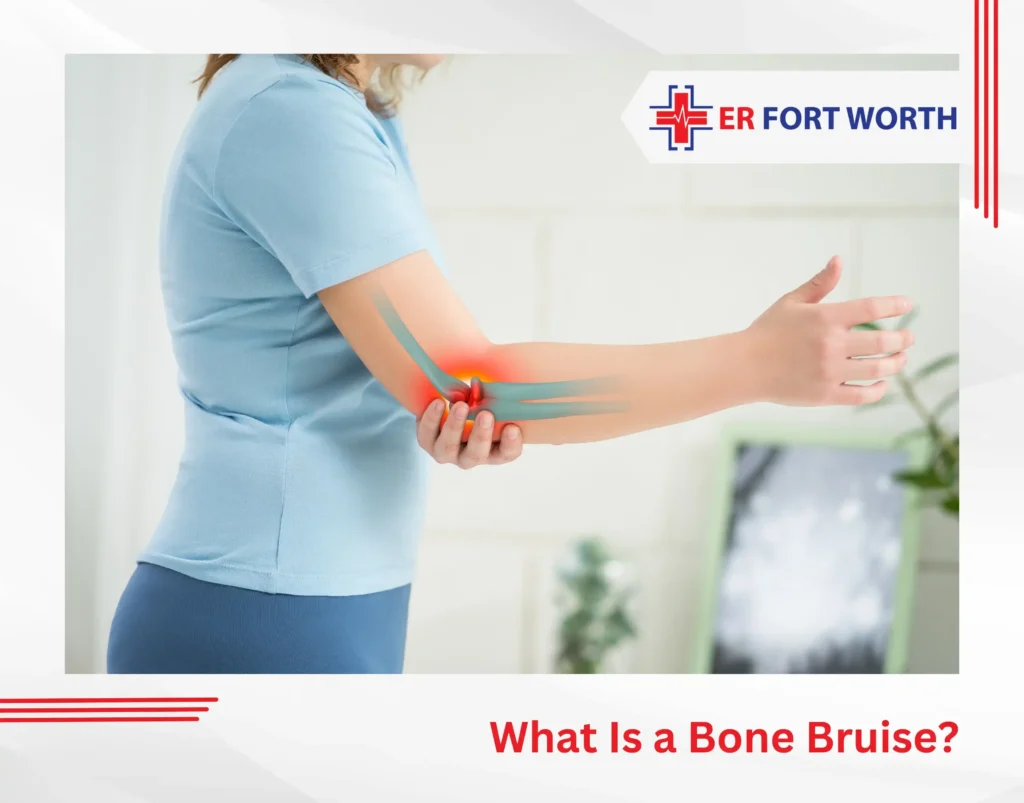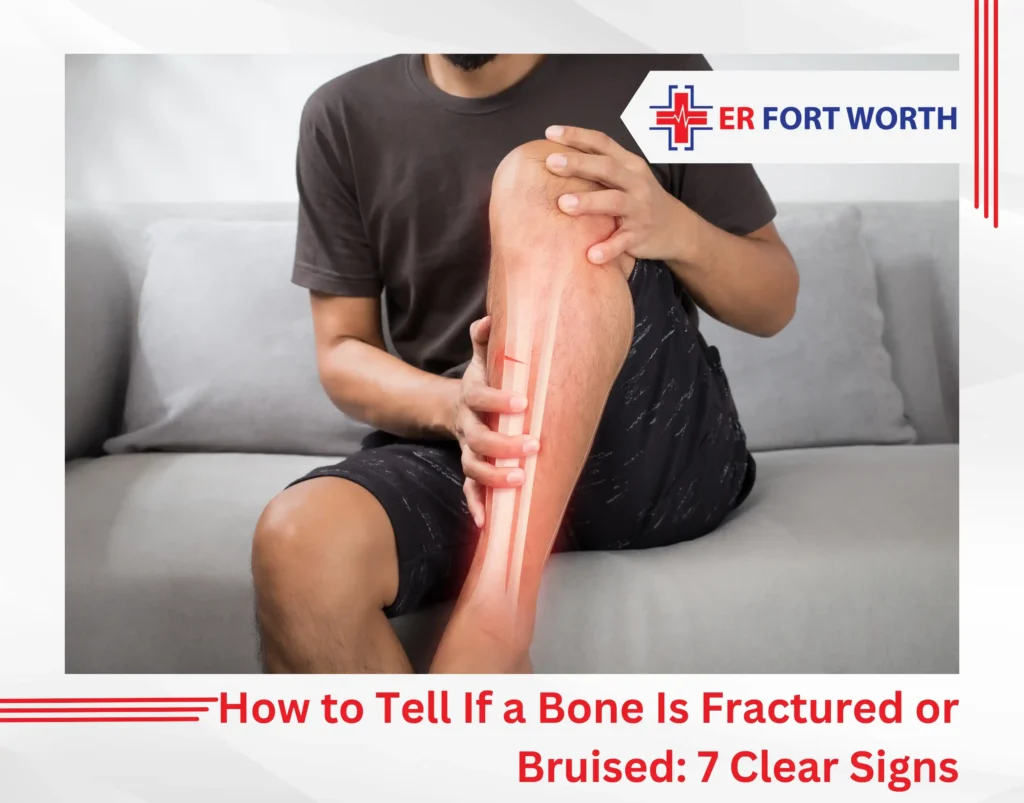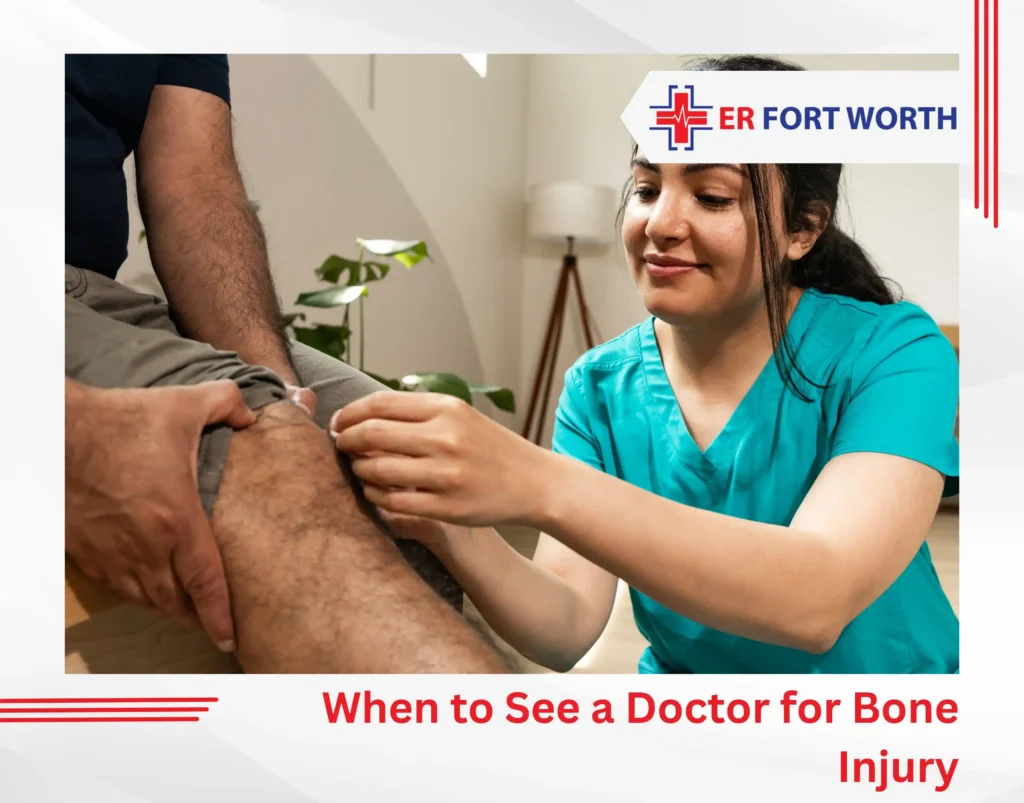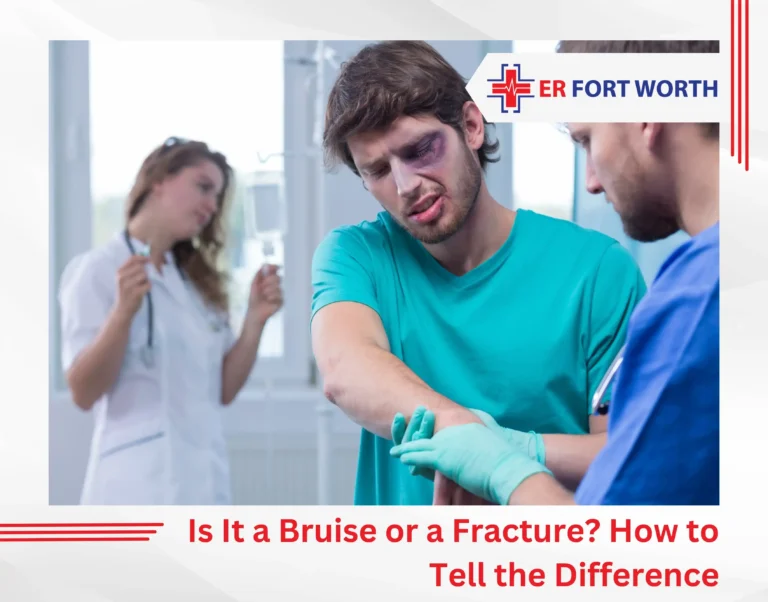Do you know a bone bruise usually heals on its own, but an untreated fracture can lead to permanent deformity or even life-threatening infections? The tricky part is that they often share similar symptoms. People sometimes push through a fracture, thinking it’s just a bruise, and end up making it worse.
Knowing the difference between a bone bruise and a fracture can save you from serious health risks, expensive medical bills, and a longer recovery. So, how to tell if a bone is Bruise or a Fracture? Let’s break down the symptoms, causes, and how each one is diagnosed.
What Is a Bone Bruise?

A bone bruise, or bone contusion, occurs when trauma damages the bone’s surface and tiny blood vessels inside. This results in bleeding and swelling within the bone without a full break. Though less serious, bone bruises still need care.
Common bone bruise signs include:
- Deep, aching pain near the bone
- Swelling
- Purple or bluish discoloration
- Tenderness to touch
- No obvious deformity
What Is a Fracture?
A fracture, or broken bone, is a crack or complete break in the bone’s structure. Fractures range from hairline cracks to full breaks and can be more severe and painful than bruises.
Common broken bone symptoms include:
- Sudden and severe pain
- Swelling that gets worse
- Bruising
- Inability to move or bear weight
- Visible bone or deformity
- A popping or snapping sound during injury
How to Tell If a Bone Is Bruise or a Fracture: 7 Clear Signs

Here’s a head-to-head comparison of symptoms to help determine whether a bone is Bruise or a Fracture.
1. Pain Severity
Bone Bruise: Dull, aching pain that may worsen with pressure or movement.
Fracture: Sharp, intense pain, especially when trying to move or bear weight.
2. Swelling and Discoloration
Bone Bruise: Swelling and deep purple or blue discoloration near the injury site.
Fracture: Swelling is often more rapid, with bruising and sometimes visible deformity.
3. Mobility
Bone Bruise: You can usually move the area, though it may be painful.
Fracture: Movement may be severely limited or impossible due to intense pain.
4. Sound or Sensation at Injury
Bone Bruise: No sound; pain develops over time.
Fracture: You may hear a crack or pop at the time of injury.
5. Visible Deformity
Bone Bruise: The area may be swollen but generally maintains a normal shape.
Fracture: The limb or joint may look misshapen or misaligned.
6. Causes
Bone Bruise:
- Falling and landing hard on a joint
- Sports injuries (like a football tackle or a basketball collision)
- Bumping into furniture or doors at high speed
- Car accidents with seatbelt force or dashboard impact
- Twisting injuries (can happen in sprains with joint compression)
Fracture:
- Falls from a height
- Direct, high-impact trauma (e.g., car accidents, being hit with something heavy)
- Twisting forces that overload the bone (common in sports injuries)
- Repetitive overuse (seen in stress fractures in runners or dancers)
- Weak bones (from conditions like osteoporosis or cancer)
Bone Injury Diagnosis
Knowing how to tell if a bone is Bruise or a Fracture isn’t always enough. A thorough bone injury diagnosis is the only way to accurately identify the condition. Here’s how doctors figure it out:
- Physical Examination: A healthcare provider will ask about how the injury occurred and look at:
- Where the pain is located
- Whether you can move the area or put weight on it
- Signs of deformity, instability, or extreme tenderness
- X-rays: X-rays can clearly show a crack, break, or shift in the bone. Bone bruises don’t show up on X-rays. So if the image looks normal but you’re still in pain, doctors may suspect a deep bruise or a small fracture that’s harder to detect.
- MRI (Magnetic Resonance Imaging): MRIs can show soft tissue and bone marrow damage and spot bone bruises or tiny fractures that X-rays can miss. They’re especially useful when pain is deep inside the bone or near a joint.
- CT Scan: In complex injuries (suspected fractures in the spine, pelvis, or face) a CT scan gives a 3D view and helps detect hidden or multiple fractures.
When to See a Doctor for Bone Injury

Always seek medical attention if:
- The pain is severe or doesn’t improve within a few days
- There’s a visible deformity or you can’t move the affected area
- You suspect a fracture due to swelling, bruising, or a cracking sound
Home Care Tips for Minor Bone Injuries
If your injury is minor or while waiting for medical help:
- Rest the area and avoid putting weight on it
- Ice the injury to reduce swelling
- Elevate the limb if possible
- Use over-the-counter pain relievers as directed
Final Thoughts
It’s not always easy to know how to tell if a bone is a Bruise or a Fracture, especially when symptoms overlap. However understanding the key differences in pain, swelling, and function can help you act quickly and avoid long-term damage.
If in doubt, consult ER Fort Worth that’s available 24/7 for your convenience. Our on-site imaging facility provides fast and accurate bone injury diagnostics. The sooner you receive the right treatment, the better your chances of a full recovery.
FAQs
1. Can you walk on a fractured bone?
It depends on the severity and location of the fracture. Some hairline fractures may allow limited movement, but it’s risky. Always see a doctor.
2. How long does a bone bruise take to heal?
Bone bruises typically take several weeks to a few months to heal, depending on severity and location.
3. What’s worse, a bone bruise or fracture?
A fracture is usually more severe and requires more intensive treatment. Bone bruises are painful but often heal with rest and time.
4. Can a bone bruise turn into a fracture?
No, but continued stress on a bruised bone may lead to a fracture, especially if not given time to heal.
5. Will X-rays show a bone bruise?
No, bone bruises don’t show up on X-rays. An MRI is typically needed for diagnosis.




